However, it cannot be denied that more people are expressing interest in the concept of using pigment to simulate the appearance of closely shaved hair. Here are two common reasons:
- They are not able to provide enough scalp hair grafts for a hair transplant
- They lack the right type and thickness of body hair for BHT (body hair transplantation) surgery, as a result of their genetics
The Office of Dr. U is dedicated to meeting the diverse of range of needs exhibited by hair loss sufferers. Due to the challenges associated with general forms of Scalp Micropigmentation, our clinic has decided to offer a comparative, but a greatly preferable alternative, known as Trichopigmentation.
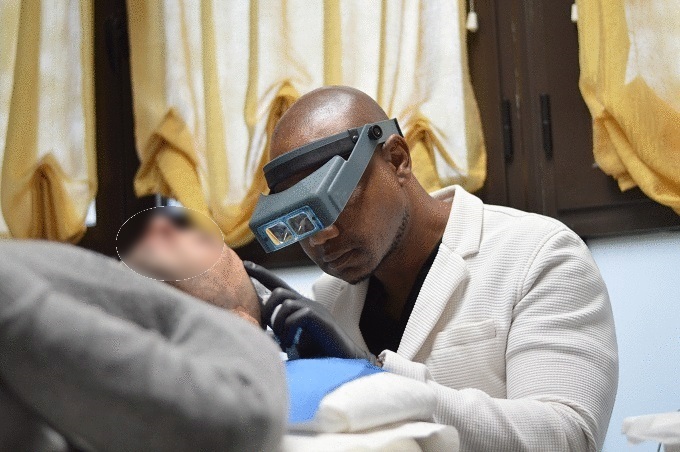
>What Is Trichopigmentation
Trichopigmentation is similar in concept to conventional forms of SMP. And technically speaking, it is actually one of the three main categories of micropigmentation. The other two are:
- Esthetical micropigmentation, also known as permanent makeup
- Paramedical (reconstructive) micropigmentation, used to camouflage scars, reconstruct the mammary areola, darken white areas marked by vitiligo
Trichopigmentation involves the insertion of tiny points of brown or black coloration to simulate the appearance of soft, newly grown stubble on the head. However, it requires the use of specialized equipment and formulation of the pigment used. This unique methodology system is intended to avoid the unwanted issues that can arise with regular scalp micropigmentation such as:
- Bluish or greenish discoloration
- Difficulties in clearing unwanted results
- Unnatural looking stubble (where appearance looks painted on)
>Scalp Micropigmentation and the Tyndall Effect
Many individuals who opt for Scalp Micropigmentation end up feeling dismayed when their results start to appear blue or a greenish hue after a certain length of time. Why does this occur?
>Basics of Skin Layers
The appearance of tattoo ink pigment is largely contingent on how deeply it is placed within the skin. Therefore, it helps to have a basic idea of the different layers within our skin.
>Essentially, there are three.
1) Epidermis – the outermost layer
- Approximately 0.5mm in thickness with cells constantly changing
- 5 layers within the epidermis
- Life cycle of cells is about 28 days, transitioning upwards from the basal to the cornified layer
(2) Dermis – the middle layer
- Hypodermis – bottom layer
- Between 3-8mm in thickness
- Divided into two sublayers: the superficial papillar dermis and the deeper reticular dermis
- Consists of collagen and elastin fibers
- Made largely of adipose (fat) tissue
- Serves to protect, regulate temperature and even provide nutrition to the skin
>The five sub-layers within the epidermis are specified as follows:
- Germinal (basal) layer
- Stratum spinosum (spinous layer)
- Stratum granulosum (granular layer)
- Stratum basale/germinativum (translucent, clear layer)
- Stratum corneum (cornified layer)
>Skin Layers & The Tyndall Effect
With SMP, the pigment is inserted into the lower layers of the epidermis. Over time, these particles migrate to the dermal (middle layer). This occurs when the white blood cells of the immune system engulf the pigment and transport the fragments to deeper regions beneath the skin’s surface.
What forms is a a type of particulate suspension within a tissue matrix. The actual color of the pigment particles will remain the same. But what will actually change is the way light interacts with them.
Light rays will bend as it passes through the skin, creating a bluish or greenish appearance. This is a phenomenon in physics known as the Tyndall effect. The deeper the pigment is, the more apparent the discoloration will be. Although a bluish hue is most common, the Tyndall effect can also be responsible for creating greenish coloration as well. Regardless, both these shades would be highly undesirable on the scalp.
>SMP Via Trichopigmentation – A Method Designed For the Scalp
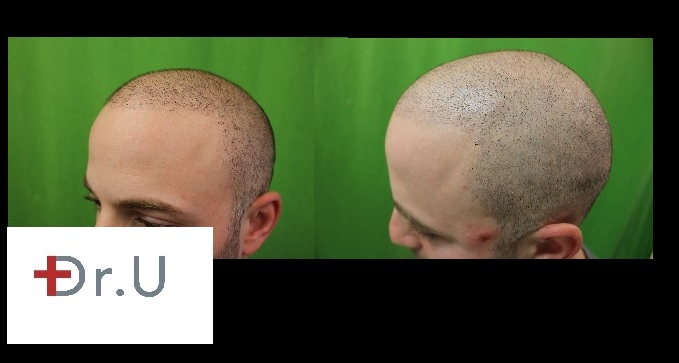
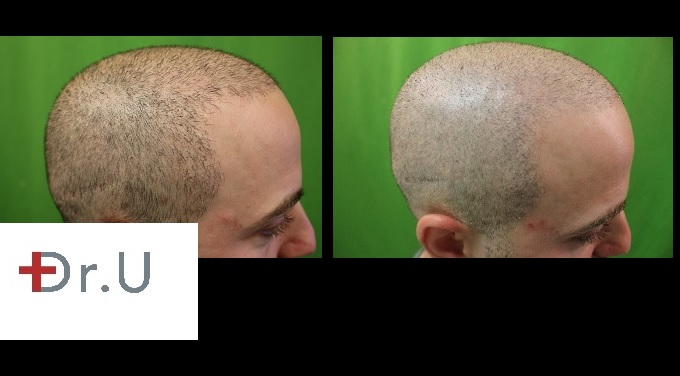
Besides the depth of the pigment, another important consideration is the unique characteristics of the scalp due to the high concentration of pilosebaceous oil secreting glands. This makes it slightly more difficult to exert precise control over where the pigment is placed. Think of the general nature of oil and how it tends to make surfaces slippery.
Therefore, tools, pigments and needles must be specialized for the scalp instead of being intended for the skin in general. Without these particular instruments and methods, the lack of control over the pigment’s placement can result in stains and irregular patches of color.
>How Pigment Coloration Stays Constant With Trichopigmentation
In Scalp Micropigmentation through Trichopigmentation, special needles are used to securely insert the pigment much closer to the skin’s surface. This is why individuals who opt for this particular method can expect the color of their results to typically remain the same.
>Use of Organic Pigment- Why This Matters
How the pigment is formulated matters for satisfactory results. Trichopigmentation uses a unique technology to create pigments that are bioabsorbable and quite seamless with the surrounding organic tissue. In summary, they are chemically designed to display desired properties such as:
- Absorption
- Color stability
- High tolerability
If the final appearance is unsatisfactory, or the individual changes their mind about having their scalp pigmented, they can find a sense of relief in knowing that Trichopigmentation results only last two years.
The Design of Trichopigmentation Needles
Trichopigmentation needles (TRICO INJECTOR) are not only designed to create the appearance of realistic looking hairs in cross section, but also to help safeguard from hand tremors during the application process.
A key feature includes having two different textures in the same needle.
- Flat
- Rough
The rough side is intended to hold and collect excess pigment that would otherwise undermine the visual result.
Applying Pigment to the Scalp Is Not the Same As Tattooing
Given the information above, it is suffice to say that Scalp Micropigmentation and Trichopigmentation are not equivalent to the application of regular tattoos for the following reasons.
- While general tattoo pigment can be applied to the scalp in the form of designs and images, it would not be the best choice when it comes to creating the appearance of closely shaved hair density. Standard tattoo ink tends to be placed much deeper in the dermis layer. Therefore, the likelihood of dark colored pigment appearing discolored or blue over time is quite great.
- Typical tattoo needles tend to be round in shape. This will create large deposits that would like rather unrealistic when it comes to replicating the appearance of hair.
Those who are seriously considering the option of using pigment as a tool for helping to reverse the signs of hair loss should therefore seek the help of highly specialized service providers instead of turning to a local tattoo parlour.
Scalp Micropigmentation Through Trichopigmentation – Pattern Baldness
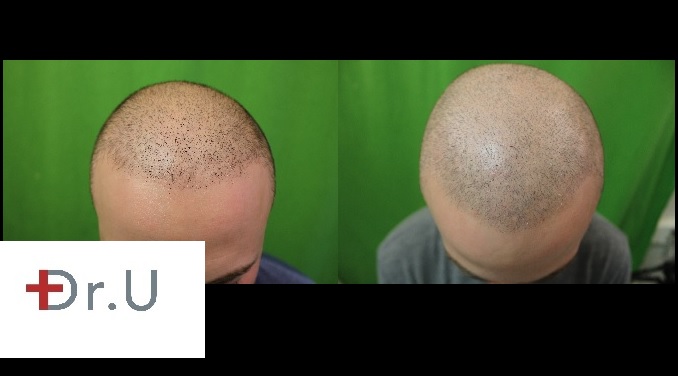
The most highly demanded use for Trichopigmentation is to help individuals suffering from pattern baldness (androgenic alopecia) restore the appearance of fullness on their scalp.
Trichopigmentation can be performed to create the following two types of effects:
- Shaved effect
- Look of improved density
In other words, the procedure may be done to simply render the appearance of having some hair growth on the scalp through a diffuse placement of the pigment.
Alternatively, Trichopigmentation may be performed in thinning areas to help produce the look of fuller density. This would be achieved by creating a greater concentration of pigment points.
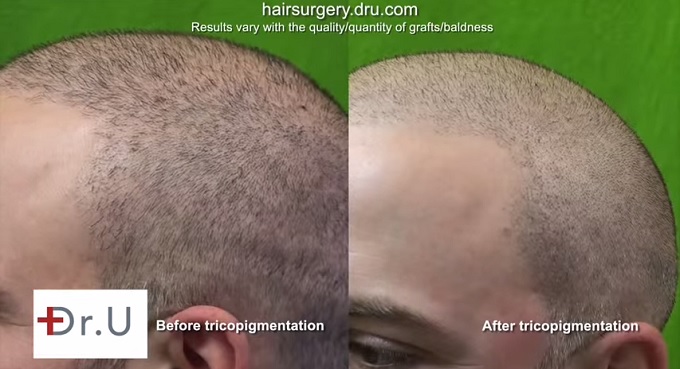
Choosing between a shaved effect or greater density would depend on the current stage of baldness. The shaved effect would be most appropriate when there is less hair present and the extent of baldness is quite severe. However, aiming to improve the look of one’s hair density is preferred in cases where there is still a significant amount of hair left, but the individual is facing the issue of lowered volume.
In general, the more hair present, the more convincing the appearance of SMP via Trichopigmentation will be. Interestingly, this principle also applies to the use of cosmetic concealer products like Toppik.
Likewise, when less hair is present, the less convincing the use of pigment will be. However, this will also depend on other variables such as the skin color of the scalp. Again, the use of SMP through Trichopigmentation on darker skin will look more realistic compared to an individual with a very fair skin tone.
The Issue of Hair Density and Color Contrast
Hair density is technically defined as the number of hairs within a given surface area. However, the objective of most patients is to achieve the appearance of fullness, rather than a specified number.
One variable to consider is the degree of contrast between the color of the hair and the skin tone of the scalp. Two individuals may have the same hair density. But one of them may appear to have fuller hair than the other if they have:
- Light hair against light colored skin
- Dark hair against dark colored skin
Those with dark hair and fair skin will have a very high color contrast. Therefore, the appearance of a fullness will be more difficult to achieve. If it is decided that Trichopigmentation is desired, this method should be used very conservatively. As a general rule of thumb, the lighter the skin tone is, the less convincing the results of micropigmentation will be.
Trichopigmentation is often times a more viable solution for individuals with darker colored skin where the use of coloration is much more difficult to detect.
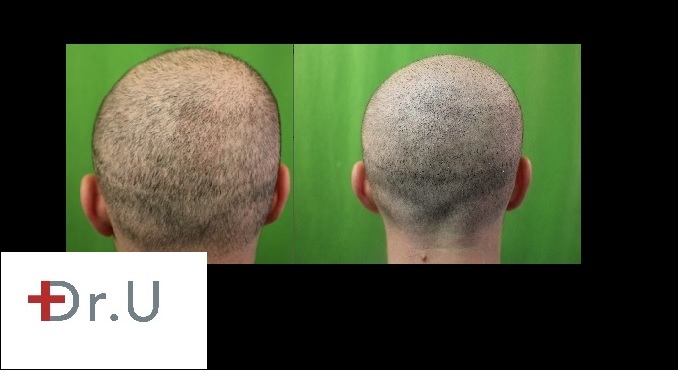
Hairline and Temple Recession
Trichopigmentation is not recommended as a solution for hairline or temple recession. Placing pigment in an area that is already bordered by hair would look quite obvious and artificial. Onlookers would easily be able to tell the difference between the pigmented region and the hair itself.
Temporary Duration of SMP Via Trichopigmentation
Since the results of Trichopigmentation are not permanent and only last two years, any changes desired can be more easily accommodated. Therefore, individuals who opt for this procedure would not have to worry about committing a particular result or outcome in stone.
SMP via Trichopigmentation and Hair Transplant Surgery
Hair transplant patients will need to shave their head before their procedure. In some cases, this may be done well in advance of the operation. Individuals who are concerned about their appearance in the meantime may consider the use of Trichopigmentation to help simulate the appearance of hair, if a completely shaved look is not desired.
Therefore, following the healing phase of the surgery, the pigment will remain and create the appearance of soft hair growth until the results fully manifest.
Covering Post Surgical Scars
Patients who decide to undergo hair transplantation need to be aware that scarring is usually an inevitable aftermath of surgery.
When the skin is injured or cut, it will create new collagen fibers. Sometimes, this is in the form of thick bundles, depending on the severity of the event. Although it is considered unsightly, the tissue is intended to protect the skin from future damage.
After a hair transplant, scarring may develop as one of several types:
- Flat scars
- Depressed scars
- Raised, or 3D hypertrophic scars
- Keloids
- Stretched scars
Patients who wish to camouflage scar tissue may want to consider the use of Trichopigmentation in conjunction with the insertion of FUE (Follicular Unit Extraction) hair grafts. Here is an explanation of why this is an effective approach.
The two major factors contributing to the visibility of scars on the scalp are:
- Line of emptiness
- Line of whiteness
The line of emptiness is best address by adding hair via FUE.
In a study of over 60 patients treated using beard hair to scar by FUE, Dr U found this approach to be very effective, leading to patient satisfaction in 70-80% of cases. Covering the line of emptiness with hair is the most natural approach to solving the problem of scar visibility. Attempting to use only SMP or trichopigmentation to address this would result in an unnatural look.
Hair will not naturally grow through scar tissue. However, follicular groupings (1-4+ strands) may be extracted from the scalp or body and deliberately inserted into the linear strip scar. The result is extremely natural looking in appearance. And Dr. U has had many patients feel confident enough to wear their hair in a buzz cut style without the scar being noticeable.
Dr. U has successfully performed many FUE repair procedures to help camouflage the appearance of linear scars resulting from previous strip surgeries conducted at other clinics. Patients are often concerned about other people noticing this type of scarring, especially if they choose to wear their hair in shorter, clean cut styles.
In cases where the scar is visible due to a line of whiteness, the scar is significantly lighter in color compared to the surrounding scalp. Therefore, it may still be visible despite growing hair in it.
As an example, after inserting hair into the scar tissue, onlookers may still be able to perceive a line on the back of the patient’s head. This is due to the line of whiteness. Therefore, the next best step in treatment is SMP or trichopigmentation which can be applied to remove the whiteness.
As noted earlier, Trichopigmentation may be instrumental for dark haired individuals with darker skin who are facing challenges with low hair density. Due to the minimal degree of color contrast between their hair and skin, areas of hair loss and thinning appear less noticeable. However, amazingly natural looking results can be created for individuals with light colored skin and darker hair shades.
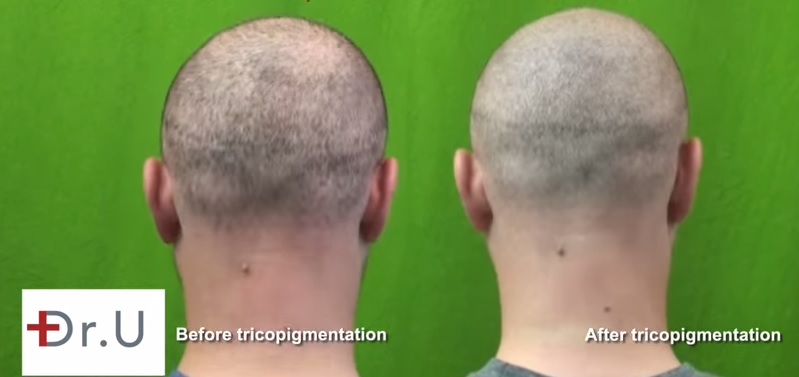
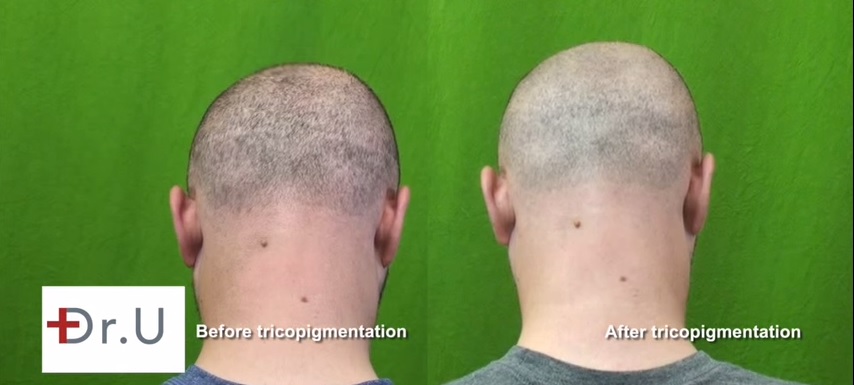
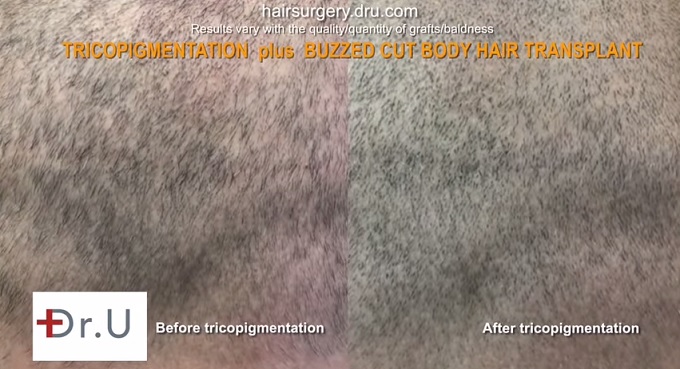
Ultimately, the use of SMP through Tricopigmentation can help the right candidates individual attain their desired look of hair fullness, while minimizing the visibility of linear scars.
It should be highlighted that strip repair methods can greatly reduce the noticeable quality of the linear scar, but the final results cannot be expected to be completely invisible. This is because strip surgery permanently changes the anatomy of the scalp by removing a section of the surface skin. Improving hair density on the resulting strip tissue through graft insertions and Trichopigmentation can produce significant outcomes, but not erase the FUT line altogether. Overall visibility will also depend on how short the patient chooses to wear their hair.
In order for results to be successful, the coloration of the scar will need to be taken into account. For example, if the scar is already white, or light in color, it makes no sense to replace this line of emptiness with a darker line by inserting pigment. Again, patients are advised to attain more natural looking results through the use of FUE hair transplantation to insert grafts into the scar tissue.
When using Trichopigmentation for the purpose of camouflaging scars, another factor that would need to be heavily considered is the type of scar. The method is most effective on flat or 3D scars. With depressed scars, there is a certain risk that the pigment will spread in the trough. Therefore, it is highly advised that a preliminary test is conducted on a small area (10 days before treatment) to determine whether or not the use of pigment would be an effective route to take.
Although raised scars can be pigmented by SMP or trichopigmentation successfully, the raised bump would increase scar visibility. Thus it is best to have the scar first flattened by steroid injections and or revision by the doctor before considering FUE or SMP. Dr U has determined that hypertrophic scars may lead to lower yields when grafted with hair.
SMP through Trichopigmentation should not be used on keloid scar tissue. Stretched scars should first be camouflaged with hair by grafting via FUE or revised to reduce their width before SMP or trichopigmentation is considered.
Other Applications of Trichopigmentation
In addition to androgenic alopecia (pattern baldness) and the camouflaging of scars, there are other conditions which may benefit from Trichopigmentation. These include:
- Immune disorders causing hair loss, including: alopecia areata and universal alopecia
- Post prosthesis
- Hair loss (alopecia) in the beard region
- Sparse eyebrows
- Global thinning in women who do not qualify for hair transplantation.
Treatment Series – Scalp Micropigmentation Via Trichopigmentation
Individuals who choose to undergo Trichopigmentation can expect to undergo several treatment sessions. Here is a summary of the objectives for each.
First Session
During the first treatment, the practitioner will work to arrange natural looking configuration of dots on the skin. The array is done in irregular clusters of pigment points within a rough hexagonal shape.
These points are also inserted more sparsely near the perimeters of the scalp, such as the frontal hairline, temples, periaural and posterior hairline.
Second Session
During the second session, additional refinements are made to create a more desired outcome. Examples include:
- Mimicking the different densities of the various regions on the scalp
- Blending and harmonizing the pigmented areas with the regions of natural hair
- Camouflaging scars
- Creating appropriate densities for areas marked by hair thinning.
Third Session
This is a mandatory check up session performed one month following the second treatment to view the results and implement any enhancements or corrections that are deemed necessary.
Fourth Session
The fourth session is optional. It is performed when the density or desired effect requires improvement. This may be due to factors like:
- Ssunlight exposure
- Use of products with alcohol
- Excess sweating
- Dermatitis
General Maintenance
Individuals who choose Scalp Micropigmentation through Trichopigmentation will need to institute a regimen of grooming practices to help maintain their results. This would include the following:
- Using a special Trichoshampoo to wash and cleanse the treated area
- Avoiding artificial and natural sunlight to prevent the pigment from fading
- Applying the Post Trico serum regularly, as directed
- Avoiding exposure to salt water and chlorine
- Avoiding situations that would lead to excessive sweating
- Reducing visits to the gym, Turkish baths and saunas
- Avoiding the use of microfibers during the first week
- Refraining from use of grooming products containing alcohol (*Note: this should start a week before the first treatment)
- Avoiding the use of prosthetic caps
Reapplications and touch ups of the Trichopigmentation are recommended around every six months. Fading not only occurs from the factors listed above, but also through a process known as phagocytosis. This is where white blood cells in the body will engulf foreign particles to keep the skin and body safe from harm. Pigment particles are subject to being targeted as well.
Before each treatment session, the following measures should also be practiced.
- Washing the hair on the day before the session if the objective is to create the look of an improved density
- Shaving the hair on the day before the session if the aim is to create the appearance of a newly shaved head
- Avoiding excessive sun exposure
- Refraining from the use of grooming products with alcohol (e.g. colognes, perfumes, hair sprays, toners etc.) a week before the session
- Avoiding spicy foods
- Avoiding the intake of medical drugs
- Avoiding the excessive intake of alcohol
Additional measures and instructions relevant to the patient’s case can be provided by the Trichopigmentation practitioner.
Fixing Scalp Micropigmentation Mistakes Through FUE
The use of scalp pigment needs to be applied in ways that produce a natural looking final result for the patient. This practice should not be viewed as a substitute for a hair transplant, especially in cases where hairline and temple advancement is desired.
Here is an example where a patient wanted to reverse the recession of hair in both these areas. He thought that Scalp Micropigmentation would be able to fulfill his objective. But this did not work well
The texture of his existing hair contrasted very noticeably with the pigmented regions, as shown in the before images below. Due to how conspicuous and obvious this looked, the patient felt very self conscious.
Furthermore, the SMP pigment used had turned to a greenish coloration. This occurred as a result of ink being deposited very deep below the skin’s surface, creating an environment for the Tyndall (light refraction) effect to take place.
Although the patient had chosen Scalp Micropigmentation to avoid the need for surgery, he ultimately decided upon an FUE hair transplant procedure to cover the unwanted ink on his temples and hairline area.
Click here to read more about this patient’s case.
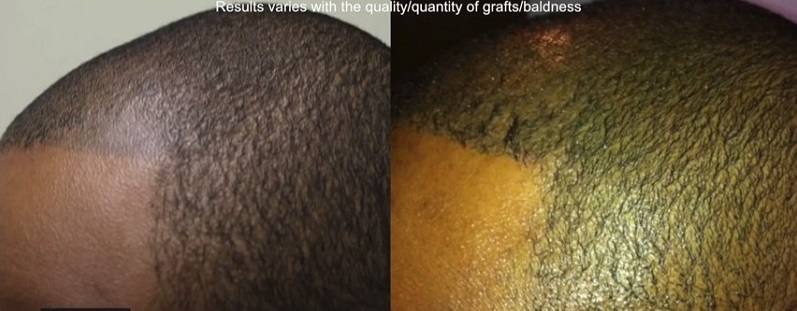
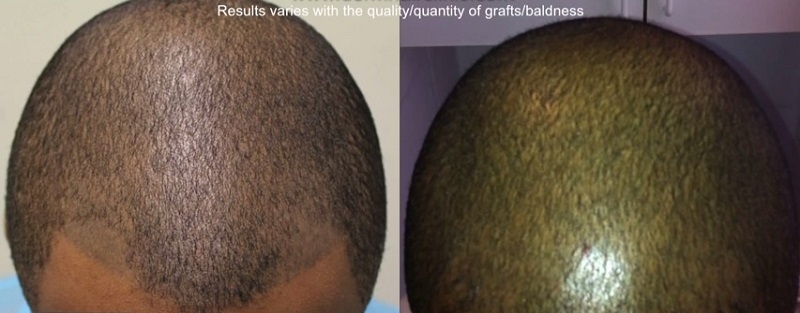
Poor Candidates for Trichopigmentation
While Trichopigmentation can benefit many types of hair loss situations, this treatment is not recommended for everyone. In fact there are certain hair colors where the use of this scalp pigmentation technique is ill-advised.
Trichopigmentation can mimic black hair as well as dark brown or auburn, to some degree. However, the shades rendered by this method would contrast unfavorably with:
- Red hair
- Blond
- Grey or white
However, if color contrast mistakes are made, the advantage of using Trichopigmentation is that the shading would be able to fade completely after two years due to it’s temporary nature, which is an advantage when individuals change their minds.

